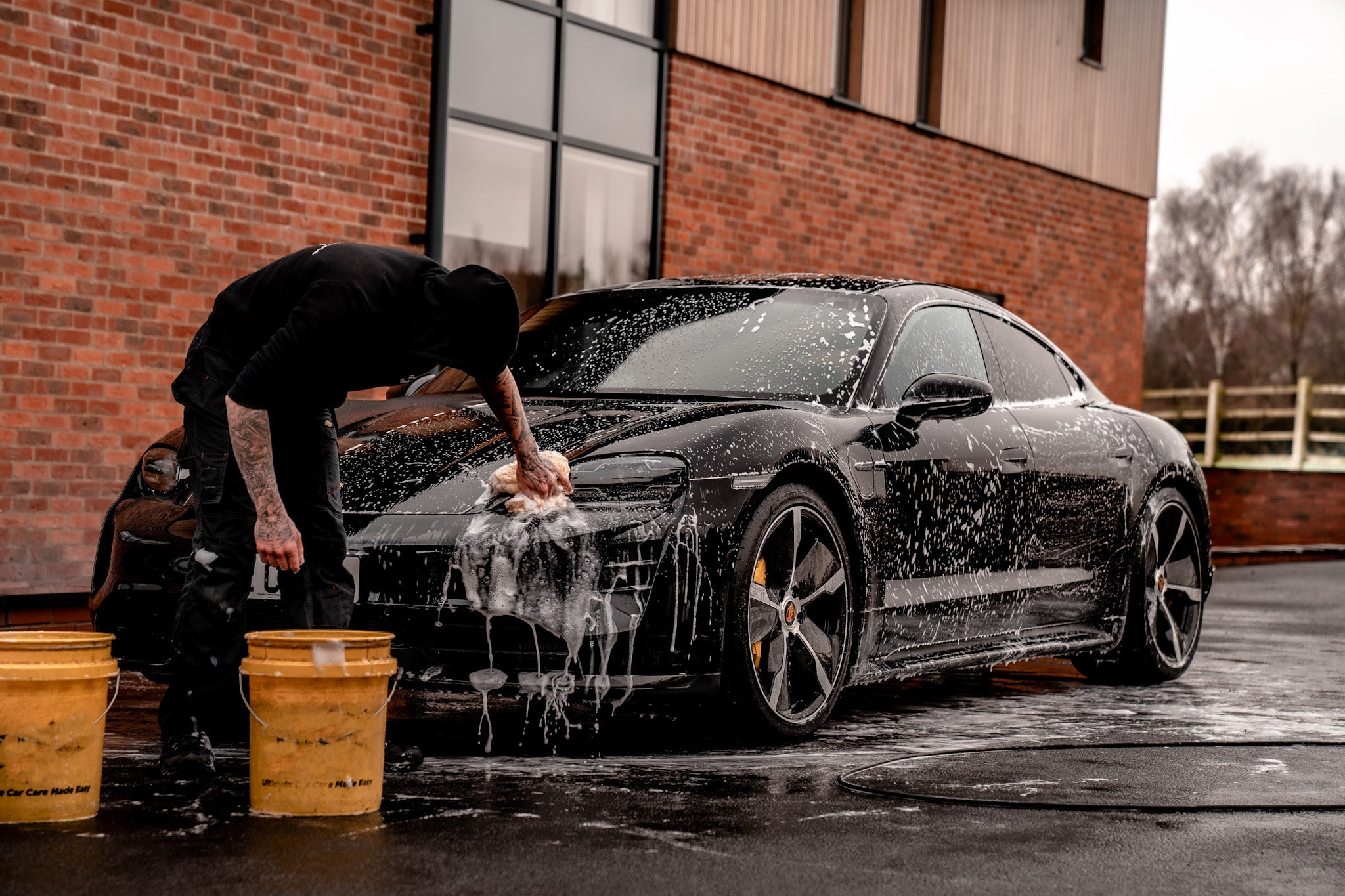A Comprehensive Guide to the Kinds Of Ceramic Finishing on the marketplace
Ceramic finishings have actually emerged as a pivotal service across numerous sectors due to their special buildings and applications. As we discover the distinctive qualities and applications of these coatings, the effects for performance and durability end up being progressively obvious, raising questions regarding which kind might best fit your needs.
Comprehending Ceramic Coatings
Ceramic finishings are sophisticated safety remedies that have gained appeal in numerous markets, particularly in auto and aerospace applications. These layers consist of a liquid polymer that, when treated, develops a resilient, hydrophobic layer externally of the substratum. This layer offers improved resistance to environmental contaminants, UV radiation, and chemical direct exposure, thereby prolonging the life and visual charm of the underlying product.
The basic component of ceramic coverings is silica, which adds to their hardness and longevity. The application procedure generally entails surface area prep work, application of the finishing, and curing, which can be attained with heat or UV light. Once cured, ceramic coverings display phenomenal bonding residential properties, enabling them to stick highly to a range of surface areas, including metals, plastics, and glass.
In enhancement to their safety functions, ceramic layers likewise use ease of maintenance. Their hydrophobic nature lowers the adherence of dust and grime, making cleaning simpler and much less regular. Overall, the adoption of ceramic finishings stands for a substantial improvement in surface area protection technology, giving both practical and visual benefits across several fields.
Types of Ceramic Coatings
Various sorts of ceramic coverings are offered, each designed to satisfy particular performance needs and applications - scratch repair sarasota. The most usual types include:
Silica-based Coatings: These coverings mainly include silicon dioxide and are recognized for their resilience and chemical resistance. They are extensively utilized in auto and commercial applications.
Titanium Dioxide Coatings: Prominent for their photocatalytic properties, titanium dioxide finishings are often applied in environments where self-cleaning and antifungal homes are preferable, such as in building products and automotive finishes.
Zirconia Coatings: Defined by their high-temperature stability and thermal resistance, zirconia coatings are used in applications such as generator engines and high-performance automotive components.
Alumina Coatings: Displaying outstanding solidity and thermal stability, alumina coatings are regularly used in wear-resistant applications, including cutting tools and industrial equipment. - ceramic coating sarasota
Hybrid Coatings: Integrating the buildings of various materials, hybrid coatings offer boosted efficiency characteristics, making them appropriate for special and demanding applications.
Each kind of ceramic layer offers distinct functions, allowing users to choose one of the most proper option based on specific environmental problems and efficiency requirements.
Benefits of Ceramic Coatings
Coatings play a crucial duty in enhancing the efficiency and durability of surfaces click here for more info throughout numerous industries. Ceramic coverings, particularly, deal numerous advantages that make them progressively preferred amongst manufacturers and consumers alike. One of the primary advantages is their extraordinary longevity. These coatings are resistant to scrapes, chemicals, and UV rays, making certain that the underlying surface area continues to be safeguarded with time.
Along with sturdiness, ceramic coatings give superb hydrophobic residential properties, allowing for easy cleaning and upkeep. This water-repellent nature reduces the adherence of dirt, grime, and other impurities, which can lengthen the aesthetic allure and capability of the surface. Moreover, ceramic finishings can considerably enhance thermal resistance, making them ideal for applications that withstand high temperature levels.

Application Process
When using ceramic finishes, a meticulous method is vital to achieve ideal results. The application process typically starts with comprehensive surface area preparation. This involves washing, sanitizing, and polishing the surface to get rid of all impurities, including dust, grease, and prior waxes or sealants. A tidy surface area makes certain proper bond of the finish.
Once the surface is prepped, the next step is to apply the ceramic layer. This can be done using an applicator pad or a microfiber cloth, making certain also protection. It is vital to work in little areas to maintain control and stop premature healing. The covering ought to be applied in slim layers, as thicker applications can lead to irregular surfaces.
After application, the finish calls for a certain curing time, normally ranging from a couple of hours to a full day, depending on the item. Following these steps carefully will maximize the effectiveness and durability of the ceramic covering, offering a resilient protective layer for the surface area.
Upkeep and Long Life
To make certain the longevity and performance of a ceramic covering, regular upkeep is vital. Ceramic layers, known for their toughness and protective top qualities, require particular treatment regimens to maximize their lifespan and efficiency. The primary step in upkeep includes regular cleaning with pH-neutral soap, preventing extreme chemicals that can degrade the finishing. It is advisable to wash the vehicle frequently, preferably every her comment is here two weeks, to stop the build-up of contaminants that might compromise the coating's honesty.
In enhancement to routine washing, routine evaluations are crucial. Search for signs of wear or damages, such as hydrophobic residential or commercial properties lessening or surface area blemishes. If essential, a light gloss might be used to rejuvenate the coating without removing it away.
Additionally, the application of a booster spray can boost the finishing's hydrophobic impacts and recover its gloss. This is particularly beneficial for finishings that have actually remained in usage for an extensive duration. Eventually, by adhering to these upkeep methods, one can dramatically prolong the life of a ceramic finishing, guaranteeing that it continues to give ideal protection against ecological variables and maintain the visual allure of the automobile.
Verdict
